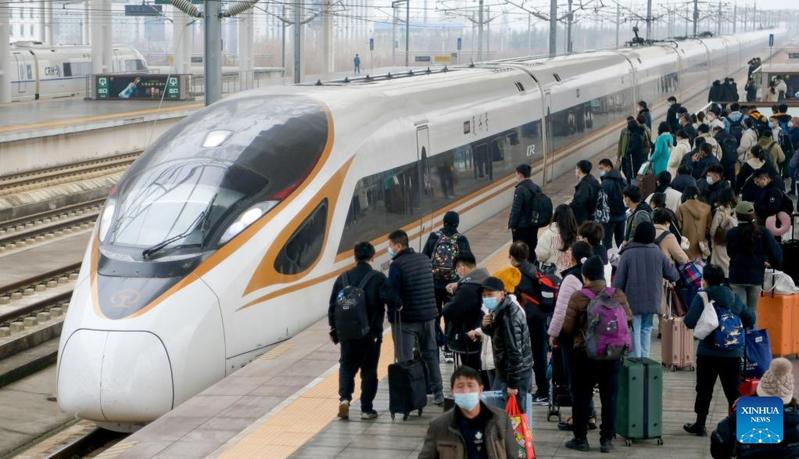Pent-up desire to see families released after COVID travel restrictions dropped
 Passengers wait to board a train at Luoyang Longmen Railway Station in Luoyang, Central China's Henan province, Feb 15, 2023. (PHOTO / XINHUA)
Passengers wait to board a train at Luoyang Longmen Railway Station in Luoyang, Central China's Henan province, Feb 15, 2023. (PHOTO / XINHUA)
Some 4.73 billion passenger trips were made during the 40-day Spring Festival travel rush this year, with people across the nation able to travel freely and visit their loved ones, and for some, for the first time in three years.
The huge travel figures demonstrate the considerable rebound in China's domestic travel industry following the optimization of COVID-19 control measures last month.
The travel rush began on Jan 7 and ended on Wednesday.
Of the total trips made, nearly 1.6 billion were via public transport, a year-on-year increase of 50 percent. These were still only about half of the volume of trips made during the same period in 2019 however, according to the Ministry of Transport.
During the holiday period, a record 1.18 billion vehicle trips were made on expressways, carrying some 3.14 billion passengers, a year-on-year increase of 18.6 percent, and a 17.2 percent increase on the 2019 figure for the same period.
On Jan 27, the sixth day of the first month of the Chinese New Year, car trips on expressways peaked at 60.29 million, according to the ministry.
China's Spring Festival travel rush has been the world's biggest annual human migration for decades. In 2019, before the COVID-19 pandemic hit, nearly 3 billion trips were made via the public transportation system during the period.
Between 2020 and 2022, people were advised to avoid traveling during the festival to prevent the spread of COVID-19 infections. Their suppressed desire to travel was unleashed in 2023, with passenger trips — both via public transport and private vehicles — hitting a three-year high.
During the holiday in 2022, 1.05 billion trips were made via public transport, compared with 870 million in 2021 and 1.5 billion in 2020.
Yu Shaoxiong, a migrant worker in Beijing, drove from the capital to his home in Chongqing with his wife during the holiday.
"It was more convenient and safer," he said, adding that his wife was still coughing when they began their journey.
"Even though both of us had just recovered from COVID-19 before the trip, we thought driving might be a better way to keep us from the crowds," he said.
The movement of goods was almost as busy as the movement of people during the holiday.
According to national railway operator China State Railway Group, roughly 415 million metric tons of cargo were transported via the railway system during the travel rush and even more cross-border cargo was transported via the network.
A total of 1,802 freight trains between China and Europe were operated during the travel rush, a year-on-year increase of 14 percent. Those trains carried 190,000 containers, 23 percent more than during last year's rush.
A total of 325,000 tons of cross-border cargo was transported via the China-Laos Railway, nearly three times as much as the amount transported during the travel rush last year.


